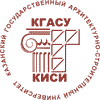About the authors
| First name, Middle name, Last name, Scientific degree, Scientific rank, Current position. Full and brief name of the organization, The organization address. | Eugene Y. Partny, post-graduate student, Belarusian State University of Transport, Gomel, Republic of Belarus. Email: This e-mail address is being protected from spambots. You need JavaScript enabled to view it , ORCID: 0009-0000-7340-7643 Igor G. Malkov, doctor of architecture, professor, Belarusian State University of Transport, Gomel, Republic of Belarus Email: This e-mail address is being protected from spambots. You need JavaScript enabled to view it ORCID: 0009-0005-1209-4117 |
| Title of the article | Fundamental differences between architectural and planning rehabilitation and general rehabilitation of radionuclide-contaminated areas |
| Abstract. | Problem statement. One of the consequences of the accident at the Chernobyl nuclear power plant was the formation of cultural trauma among the population living in the radionuclide-contaminated territories of the Gomel region, the Republic of Belarus. Creating a safe environment for the sustainable development of a local community requires a socio-psychological impact on the population through the environment. The principles of architectural and planning rehabilitation of radionuclide-contaminated territories proposed by the author directly affect the living conditions of the local population, and therefore it is necessary to conduct a systematic analysis in relation to the general methodological principles of rehabilitation. The purpose of the work is a systematic analysis of the differences between architectural and planning rehabilitation and the general methodological principles of rehabilitation of territories contaminated with radionuclides. The objectives of the study are to study the factors influencing the course of architectural and planning rehabilitation. Analysis and systematization of the principles of the general methodology of rehabilitation. Identification of criteria and parameters for comparison. Substantiation of the features and specifics of the application of principles in architectural and planning rehabilitation against the background of general methodological approaches, identification of advantages and disadvantages. Search for further ways of development and practical implementation of the research results. Results. The main results of the work are that the analysis revealed differences and relationships between the principles of architectural and planning rehabilitation and the general rehabilitation methodology, which facilitates the implementation of the results through various government development programs in the affected regions. Conclusions The significance of the results obtained lies in the fact that the use of architectural and urban planning techniques in the rehabilitation of radionuclide-contaminated territories is formed into an independent approach when working with settlements in such territories. Further research should be aimed at developing specific recommendations for the application of the principles of architectural and planning rehabilitation for various types of settlements and different levels of radiation pollution. |
| Keywords. | radiation pollution, the accident at the Chernobyl nuclear power plant, architectural and planning rehabilitation |
| For citations: | Partny E.Y., Malkov I.G. Fundamental differences between architectural and planning rehabilitation and general rehabilitation of radionuclide-contaminated areas // News of KSUAE, 2025, № 3 (73), p. 133-141, DOI: 10.48612/NewsKSUAE/73.11, EDN: KNJOEG |
















